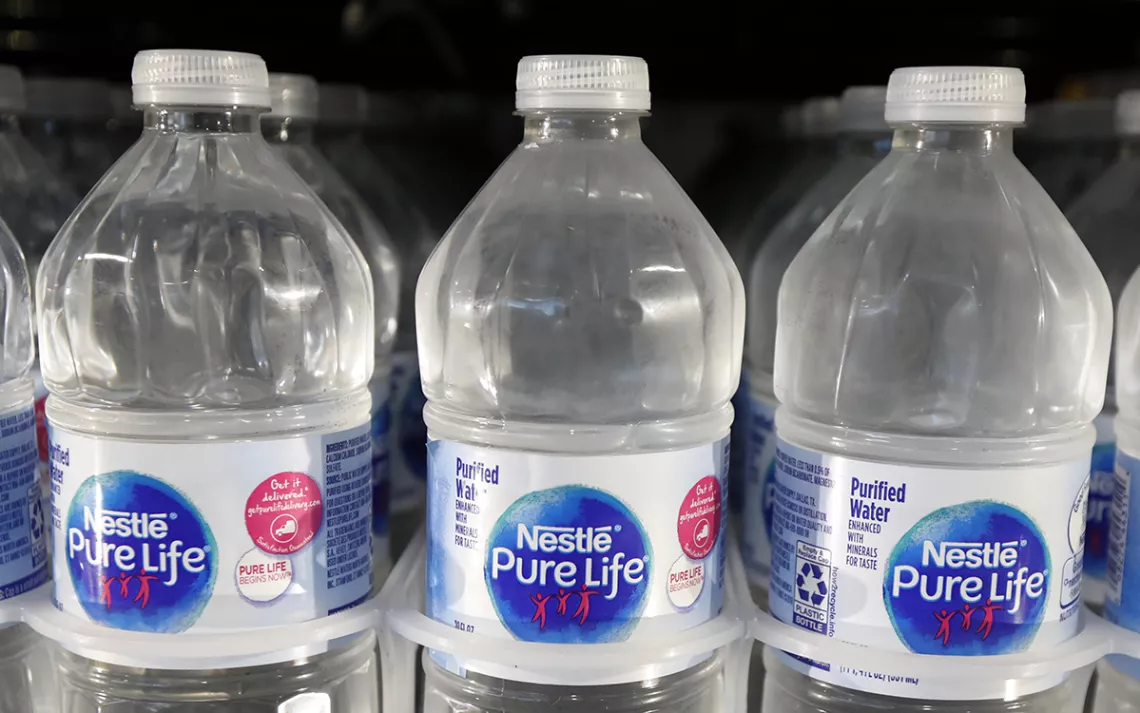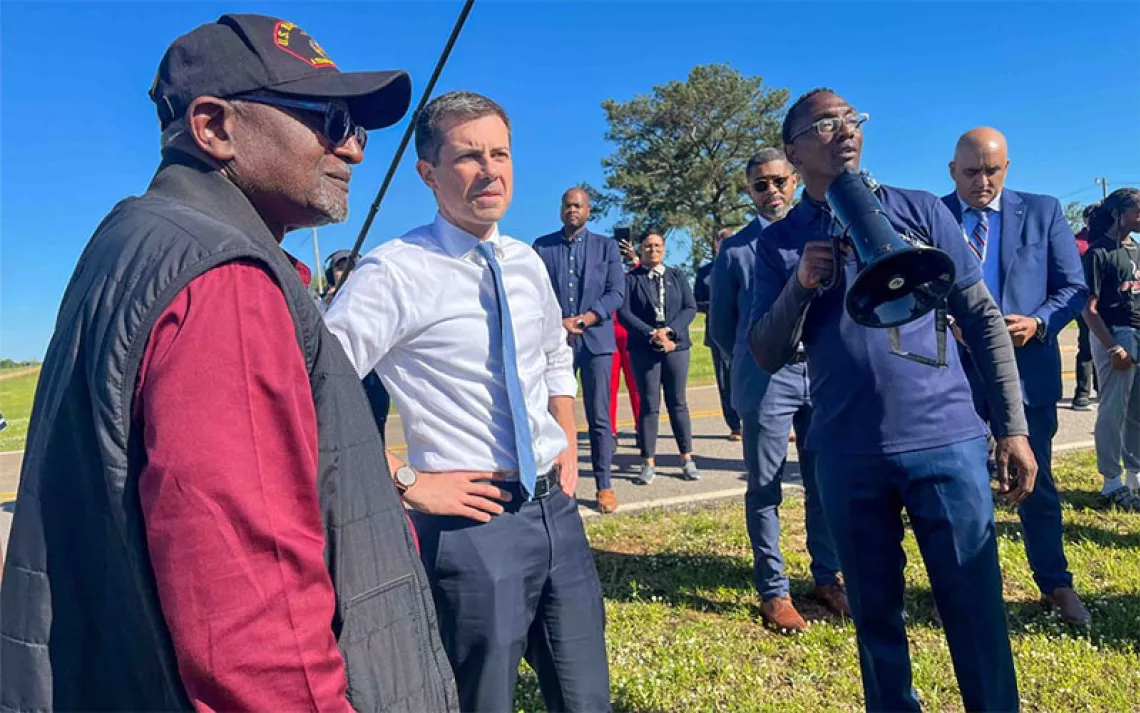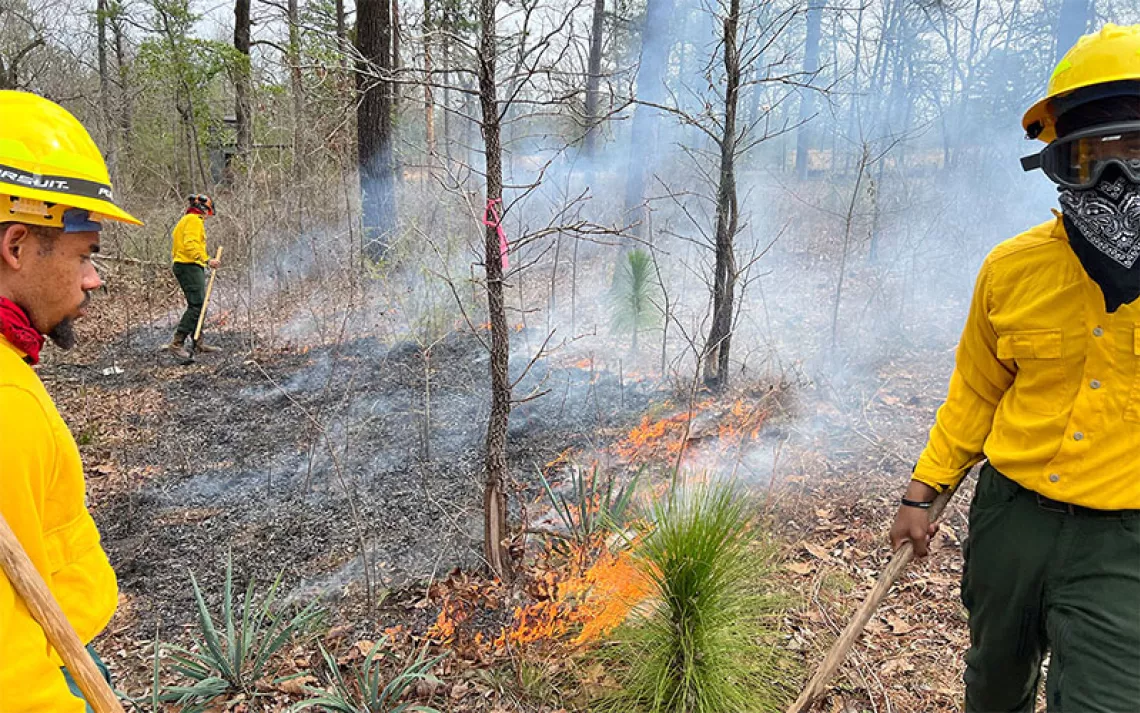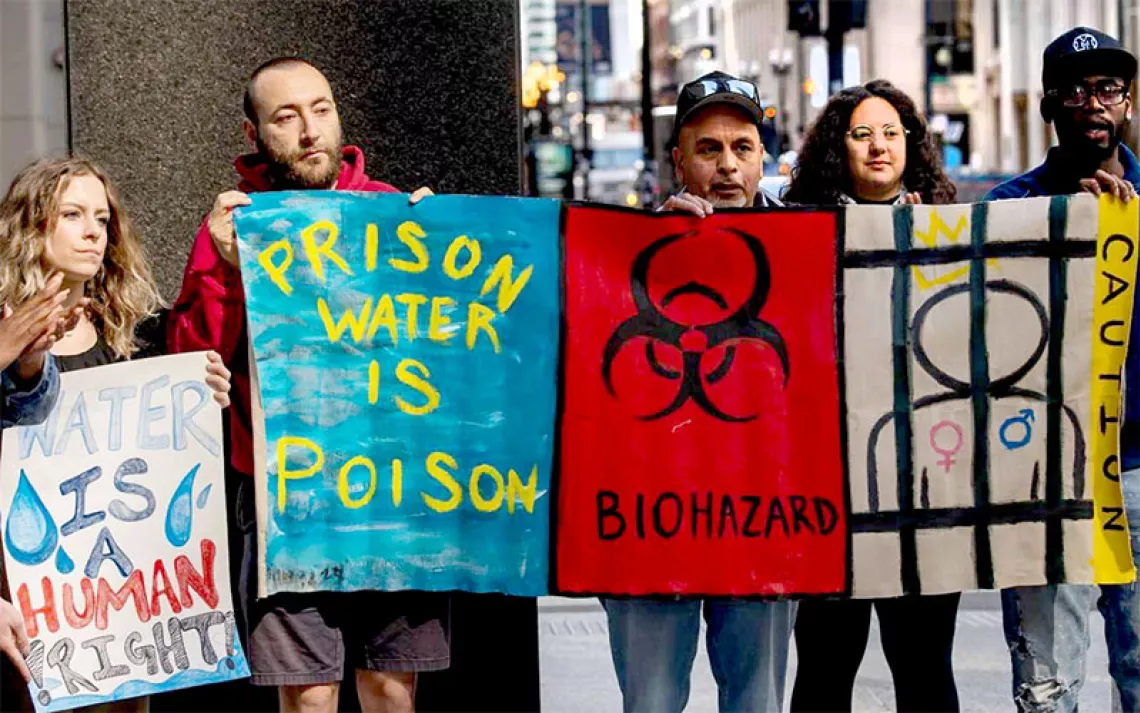The People Versus Nestlé’s Profiteering of Community Water
Locals in Ontario, Canada, say water is a human right, not a commodity

Photo by AP Photo/Rogelio V. Solis
There was nothing particularly special about the old five-acre tract of farmland on Middlebrook Road in Elora, Ontario, that once housed a modest chicken farm and a rundown slaughterhouse. Mere yards away, though, beyond the hedgerow of planted trees across the street, the Grand River flowed—just downstream of the 70-foot Elora Gorge, where locals tubed and kayaked. All that water came from someplace, ran somewhere else, and lay beneath.
Nobody paid the farm much attention when it went on the market sometime around 2005. Then, 10 years later, Nestlé Waters Canada found the real prize: The site’s deed included a 361-foot well and an expiring permit to draw 340 gallons per minute. The water bottling giant had already been operating two other nearby wells in Aberfoyle and Hillsburgh for the better part of 20 years, properties that netted them a total of 1.3 million gallons per day of allowable water extraction for bottling, though they’ve generally taken less.
In March 2015, Nestlé made a conditional offer to buy the farm and its well, pending a new permit and a pump test to determine if the site met its water quality and quantity needs. Their terms also gave them the right to first refusal without those conditions if another buyer came along with an offer.
Meanwhile, the township of Centre Wellington, where Elora sits, was thinking of its future.
“The community is expanding,” says Mark Calzavara, an organizer for the grassroots social action organization Council of Canadians, “and they don’t have enough water for that expansion.”
The city had looked at the well, their only viable water option for growth, but didn’t have the money to buy it. Nestlé wanted a backup that they presumably didn’t need for their other wells, from which they’d rarely, if ever, drawn their allotted quantity.
Decades earlier, a mysterious Seattle benefactor named Jack MacDonald had promised at his father’s deathbed to look after the Ontario town where the elder man had grown up. A secret millionaire who rode the bus and wore holey sweaters, MacDonald had been quietly sending Elora checks for community projects like a new town hall, ice rink, playground equipment, and park upgrades. He died in 2013, and not long after Nestlé had made its offer on the Middlebrook well site, new checks arrived, as requested in his last will. The township was suddenly flush with cash.
By July 2016, Nestlé still hadn’t bought the well or managed a pump test. Centre Wellington made an anonymous, unconditional offer, which propelled Nestlé to rush the purchase as its agreement allowed.
“When they did that, it was a bit of a shock to people,” Calzavara says. “Nestlé pretends that they didn’t know it was the township making that bid. You’d have to be pretty naive to believe that. This is a multibillion-dollar company who does this all over the world and has shown that it is incredibly adept at getting every bit of information possible around any of their business interests.”
Much of the public raged. This was their water, and they wanted Nestlé out. According to Rod Whitlow, a special adviser to the Six Nations’ elected council, Canada’s largest First Nation took issue with the corporate bottler’s presence on their traditional lands, whose water rights they’d never relinquished. Despite the abundance of water on those lands, where Nestlé extracts water and intends to take more, 11,000 Six Nations residents (85 percent of the population) don’t have clean tap water.
That October, the Ontario government announced a province-wide, two-year moratorium on new and expanded water-bottling permits, pending community consultation and scientific study of the impacts of water takings, especially in light of climate turmoil. It seemed a promising step for Nestlé’s would-be ousters. Other communities in British Columbia, California, Michigan, Maine, and Florida have been struggling in their own water battles with Nestlé in a lopsided war. The side with the most bodies and least power claims that clean water is a human right. The other side, where money and dubious laws reign, believes that “potable water—including bottled water—is an essential commodity,” according to Dr. Andreanne Simard, Nestlé Waters Canada’s natural resource manager.
“It’s a human rights issue,” says Maude Barlow, chairperson for Council of Canadians and board chair of Food and Water Watch. “This local water is being used to provide profit for a company as opposed to being used for a local community.”
*

Photo courtesy of Frederico Olivieri
In 1994, Ontario enacted an environmental bill of rights that allows the public to participate in any decision that affects the province’s land and water. It includes a registry of permit requests for water extraction, among other proposals. When COVID-19 sent Ontario into lockdown with the rest of the world in March, the provincial government issued emergency rules that allowed it to bypass the process and throw normally public permit dealings behind a curtain.
Some fear the government could use the opportunity to push through approvals on Nestlé’s permits. Before the two-year moratorium expired, power had changed hands from the Liberals to the Progressive Conservative Party, which is pro-business and anti-regulation.
Two-thirds of people across Ontario want the province to phase out all bottled-water takings, according to one poll. Knowing this, the Conservative government twice extended the Liberal moratorium on new and expanded water permits, now set to expire on October 1. The move rang with promise to the casual ear. But denying Nestlé a permit would be inconsistent with the party’s agenda. Approving it, on the other hand, could be political suicide.
“They know this is a tender spot for them,” says Mike Balkwill, campaign director for local nonprofit Wellington Water Watchers, “so they’re being careful. We think they’re trying to kick it down the road so they can have more favorable conditions to say yes to Nestlé.”
Those conditions may never come. Public opposition to Nestlé is powerful enough that Centre Wellington’s mayor, a Conservative, turned from pro-Nestlé to opposing the corporation and their water takings. “In the last municipal election,” Balkwill says, “you could not get elected as a candidate unless you opposed Nestlé.” Centre Wellington’s town council has passed motions indicating they’re not a willing host. Perhaps more important, all 133 First Nations chiefs in Ontario passed their own moratorium on all for-profit water takings across traditional and treaty lands in June 2018.
Nestlé appears to have ignored prevailing Indigenous and non-Indigenous local sentiment. But the corporation insists otherwise. Simard says that “the foundation of our entire approach is that local community water needs should, must, and will always come first.” To that end, Nestlé claims to have offered to donate the Middlebrook well to Centre Wellington once it realized the township was the anonymous bidder back in 2016. According to Balkwill, that “donation” was actually a secret offer to the municipality to participate in a public-private partnership. The deal would have placed the water in Nestlé’s ownership with the stipulation that the bottler would allow the town as much water as it needed first, and Nestlé would bottle the rest, an offer in line with its community-first philosophy. The township refused.
“They want to present themselves as some cozy little community-friendly outfit,” Balkwill notes. “But each local facility is a sucker on a tentacle of an octopus that reaches around the world. Are the employees local? Sure. But Nestlé is driven by their global headquarters.”

Photo courtesy of Frederico Olivieri
*
What does the earth itself have to say? One third-party water budget study near Elora, published in March, suggests that there won’t be enough water for all users by 2041.
“With all the climate change modeling saying there’s going to be less precipitation in the winter for this part of the province,” notes Whitlow, also a fish biologist who worked for the federal Department of the Environment, “it’s not going to take long for water scarcity to become an issue.”
Whitlow recalls the days of his childhood in Six Nations living on water from a 40-foot well. In summer months, they’d have to truck in water to fill the dry well. Today, scanter precipitation makes that a year-round necessity.
Nestlé insists that the science upholds its water takings, but that they remain open to new study. “If verifiable science were to suggest any alteration in the sustainability of the aquifer,” Simard says, “then we would change our operations accordingly. No doubt, regulators would insist upon it. . . . To those who insist that there should be no utilization of water resources whatsoever by Nestlé, we would simply ask what verifiable scientific basis for that position exists?”
Part of the justification for Ontario’s extended moratorium is that further study is needed, but Balkwill says it’s uncertain what, if any, science is active. And, according to Calzavara, the third-party studies Nestlé uses to justify its current and future takings were paid for by the corporation itself, calling its conclusions into question.
“They typically pick the best time of the year to do the pump test so that water levels are going to be high anyway,” Calzavara says, “and then they build their margin of error in a way that seems acceptable. But it doesn’t take into account the idea that maybe there’s going to be a 20-percent-less recharge of groundwater in the coming decade because of climate change. It’s backward looking.”
Nestlé notes that it only accounts for .01 percent of all water takings across Ontario. That number includes, for example, water that flows through hydroelectric dams. The percentage of water taken for consumptive use would be a more useful metric, one that Wellington Water Watchers is working to figure out.
“The water in Ontario isn’t one big swimming pool,” Balkwill notes. “It’s made up of watersheds and sub-watersheds, and the water doesn’t flow from one to the other. If there was a vampire in your community, and the vampire said, ‘Really, I’m only taking 10 liters of blood from all of the people in Ontario,’ you’d go, ‘Well, that’s nothing.’ If you happen to be the person that the vampire took 10 liters of blood from, it would make an awfully big difference to you.”
No one knows what to expect come October 1: a renewed and expanded permit for Nestlé, another moratorium extension, or the beginning of the end for water extraction in the province. The Council of Canadians, Wellington Water Watchers, Six Nations, and local nonprofit Save Our Water will continue their campaigns virtually over the summer to win the government’s ear. Should it ignore public will, Balkwill expects protests and a greater political price than leaders like Ontario premier Doug Ford, who is enjoying popularity amid the coronavirus pandemic, are prepared to pay.
Imagine a bathtub of water. People with blindfolds and straws surround it and sip. The drinkers drink, and the drinking feels fine until not one drop is left. “There’s no warning, if your straw goes deep enough,” Barlow says. “You’re just going to find out when it happens. That’s what we’re doing to groundwater.”
 The Magazine of The Sierra Club
The Magazine of The Sierra Club



